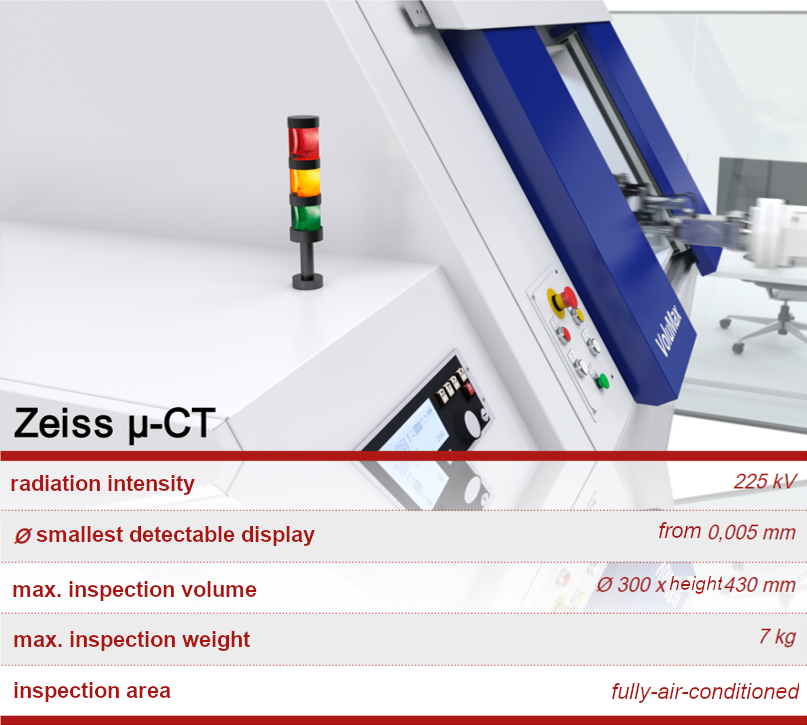

We are looking forward to help you!
Contact us »Industrial computed tomography differs from conventional medical computed tomography due to the test objects (density, composition, size, etc.), test tasks (detail scans, fast scans, etc.) and the evaluation possibilities. The most frequently used computer tomographs are the following:
The two-dimensional CT examines individual layers of the object and reconstructs them. This means that the system uses a line detector (surface beam/LDA) to create a two-dimensional image of the rotating body.
A 3D view is created by means of several scans or "sections" (numerical image sequence) of the test object, which are assembled into a 3D body by a program such as the VG Studio Max used by my employer.
An automated evaluation by the machine is only partly meaningful due to the increased scanning effort to generate a 3D volume.
In contrast to the two-dimensional CT, the three-dimensional CT examines the entire volume of the test object.
For this purpose, the X-ray source emits a cone beam onto the rotating body and a surface detector detects the residual radiation necessary for the creation of the volume body.
Due to the complete volume detection, the 3D-CT is able to perform a fast automated evaluation.
With the help of porosity/inclusion analysis, your components can be examined for internal defects such as pores, blowholes and inclusions. The visualization is carried out according to your wishes and offers the following advantages:
With the P202/P201 analysis (extended porosity/inclusion analysis) your components can be examined for pores in a certain 2D sectional view according to VDG P202/VW 50093 and P201/VW 50097. The advantages are:
By means of the target/actual comparison, your components can be compared to your CAD data with regard to their dimensional accuracy. It is also possible to compare several components with each other or to examine a component for changes before and after its use (endurance run). The most important advantages are:
Missing CAD data - Missing spare parts - No problem, using reverse engineering of the CT to the appropriate STL (polygon mesh or point cloud) or CAD data set. We would also be pleased to make you an offer for the pressure or casting of the component. Further advantages are:
By means of the dimensional accuracy test, external and internal component dimensions can be checked for their compliance. This can be done on the basis of technical drawings or your own specifications. Below are the most important advantages at a glance:
Non-destructive examination of historically important and/or valuable objects for their conditions and/or authenticity. The most important in brief:
Would you like to have the possibility to have a look at your parts at any time and independent of location or do you want to make an internal arrangement within different departments?
This is no longer a problem for you with our viewer. With this you have an independent customer access, which allows a view of your scanned parts at any time.
With every BMB order you receive the CT Viewer free of charge!
make an appointment with our CT engineers, including a test run of your electronic component, for example. We assure you that your visit will be worth it.
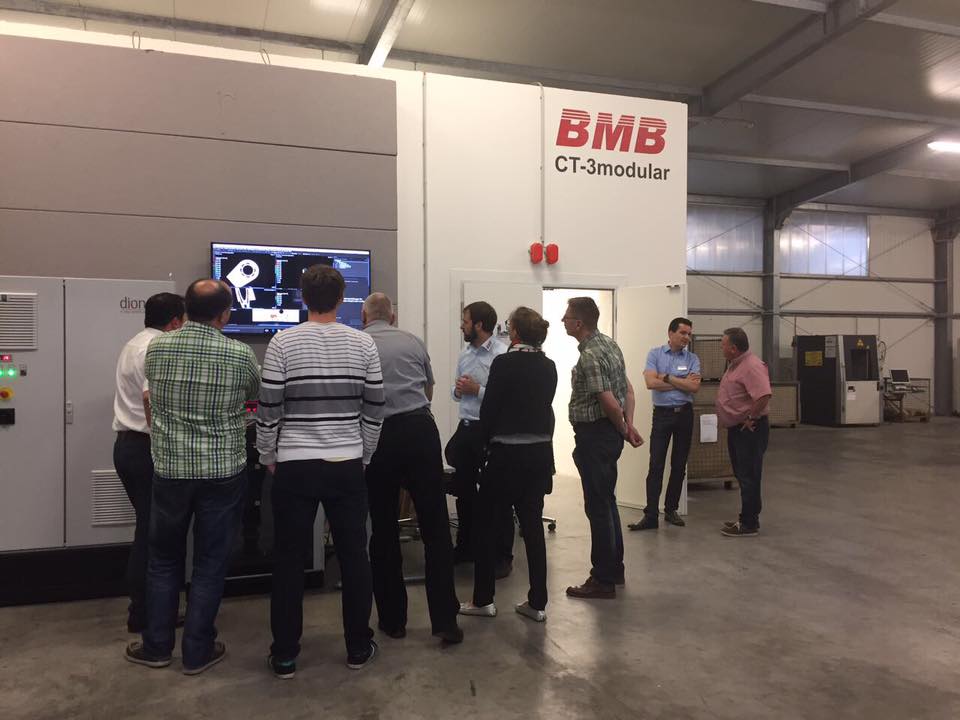
Unsere CT-3 Modular Anlage im BMB Kompetenzzentrum
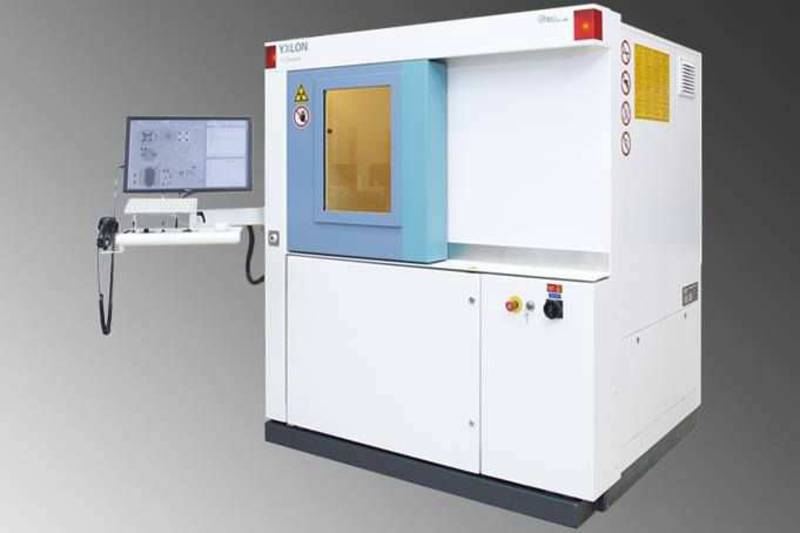
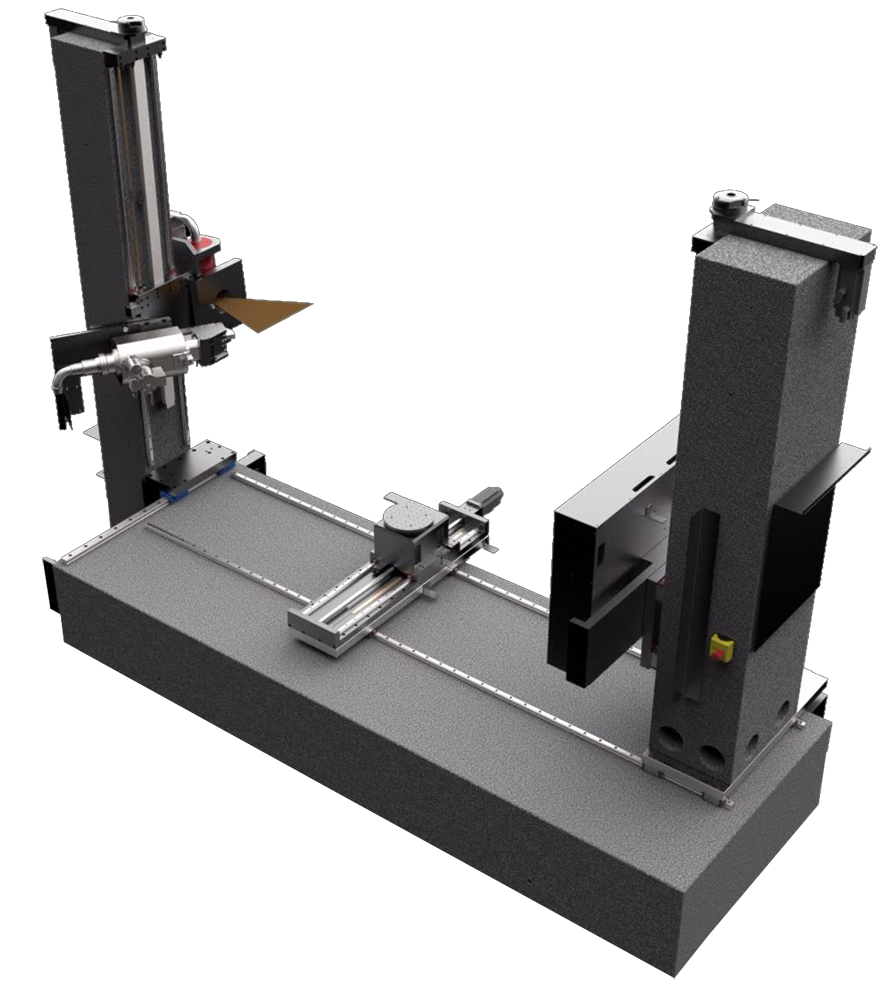

YXLON Y.CT Compact
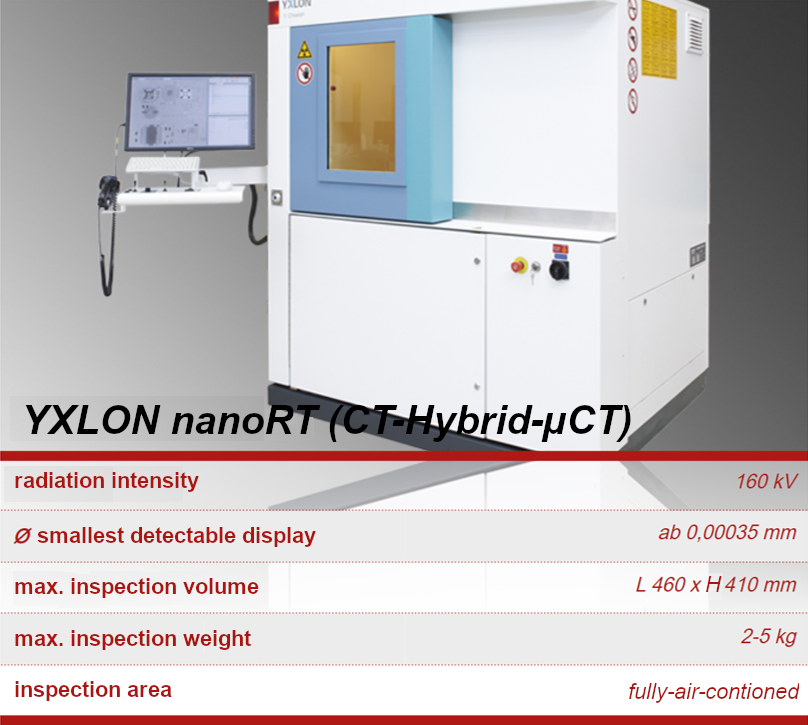
YXLON nanoCT
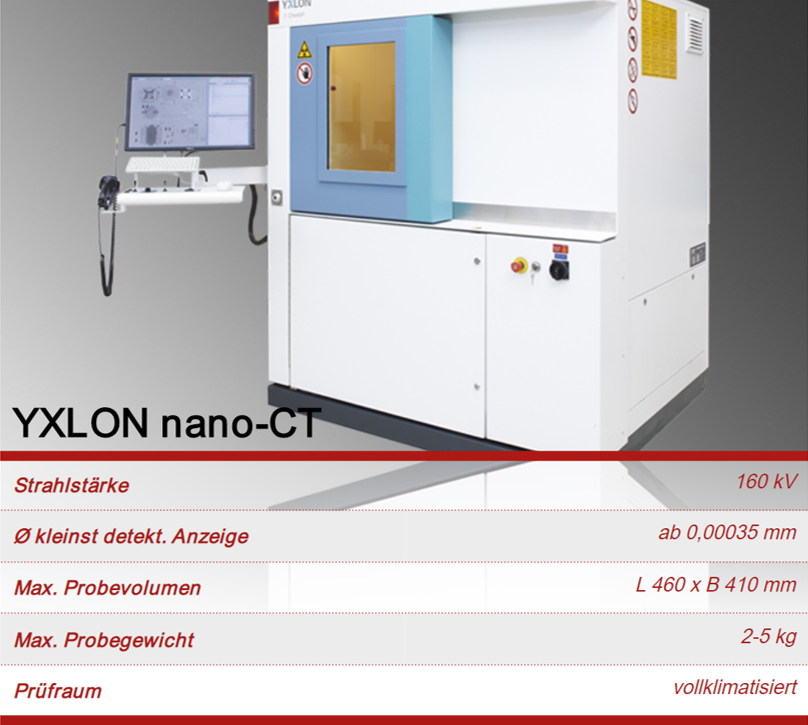
Zeiss μCT
